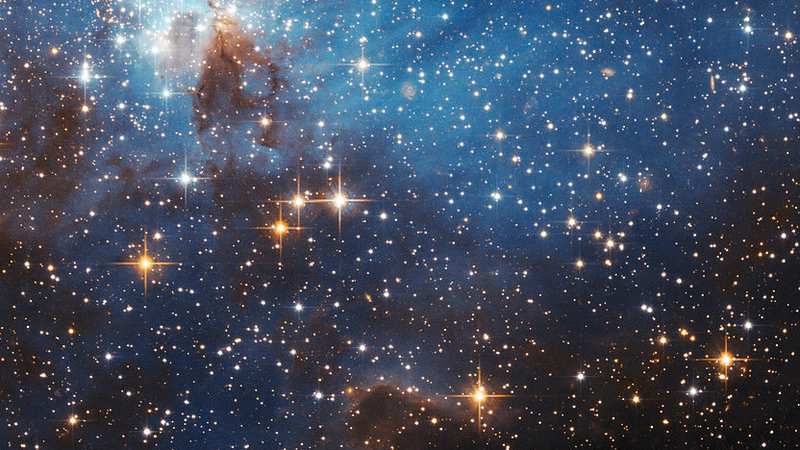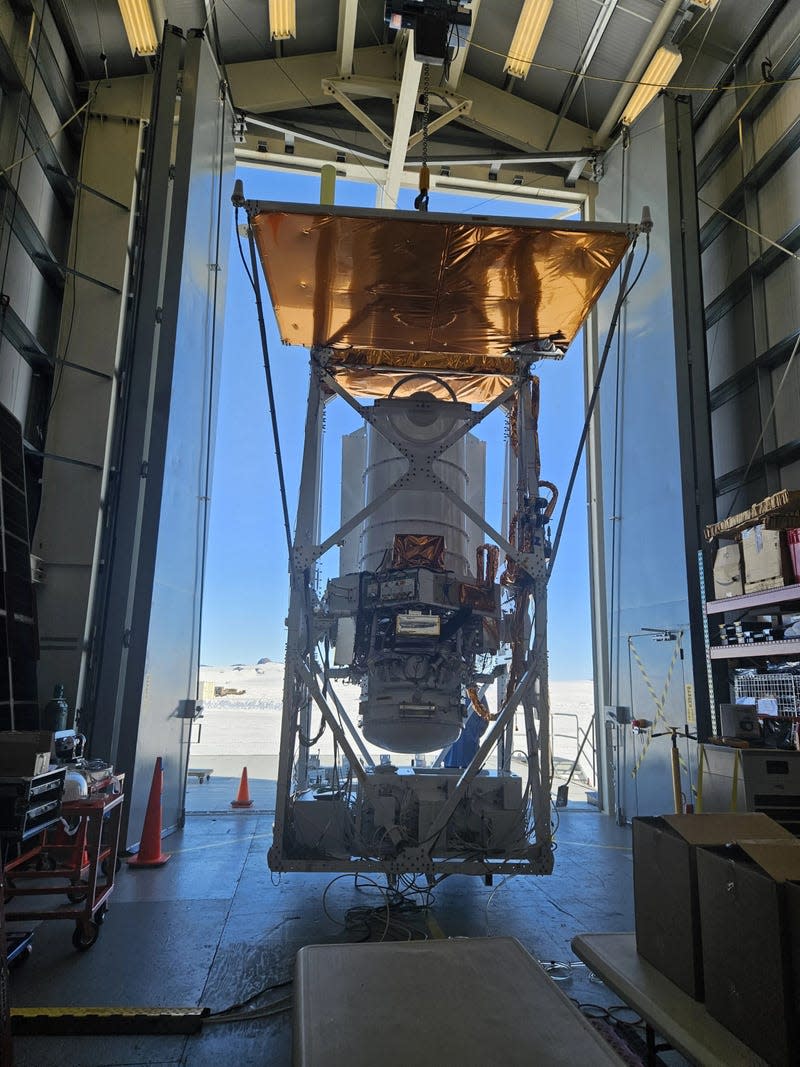How a Balloon Over Antarctica Will Help NASA Study the Mysterious Space Between Stars

A new NASA experiment will take to the skies on a balloon, scanning the space between the stars of our galaxy and listening for cosmic ingredients to understand how the Milky Way evolved over time.
GUSTO, or Galactic/Extragalactic ULDB Spectroscopic Terahertz Observatory, is launching no earlier than Thursday from the largest ice shelf in Antarctica known as the Ross Ice Shelf, according to NASA. From there, the telescope will float 120,000 feet over Antarctica while attached to a high-altitude balloon for at least 55 days.
Read more
18-Year Old GTA 6 Hacker Sentenced To Life In Hospital Prison
Russia Has A New Electric Car That's Totally Going To Destroy Tesla
This New Development Could Make Cardi B and Offset’s Split Uglier

The GUSTO telescope hangs from the hangar crane during telescope pointing tests.
Ground-based telescopes can’t carry out these observations due to the water vapor in the atmosphere absorbing the light from the atoms and molecules. GUSTO is attached to a 39 million cubic-foot balloon, which can fly high for long periods of time during the summer season over Antarctica. As it floats, the balloon will be as wide as a football field.
NASA uses two types of balloons to lift payloads towards the atmosphere: zero-pressure and super-pressure balloons. Zero-pressure balloons are typically used for short flights while balloons like the one lifting GUSTO can be used for extended flights.
While attached to its balloon, GUSTO will soar higher than the water vapor in Earth’s atmosphere. During its nearly two months above Earth, the telescope will also examine the process that forms molecular clouds, giant cosmic structures formed as a result of the accumulation of cold gas and dust that come together in interstellar space. These clouds collapse to form new stars.
GUSTO is also set to reveal the 3D structure of the Large Magellanic Cloud (LMC), a dwarf galaxy near the Milky Way that resembles some of the galaxies from the early universe. “By studying the LMC and comparing it to the Milky Way, we’ll be able to understand how galaxies evolve from the early universe until now,” Walker said.
For more spaceflight in your life, follow us on X (formerly Twitter) and bookmark Gizmodo’s dedicated Spaceflight page.
More from Gizmodo
A Black Mother Read the Conditions of Her 10-Year-Old Son's Probation. This is How She Responded.
7 More Things We Just Learned About Final Fantasy VII Rebirth
Really?! 'Married to Medicine' Star Dr. Jackie Called Pregnant Black Women the D-Word
Sign up for Gizmodo's Newsletter. For the latest news, Facebook, Twitter and Instagram.

